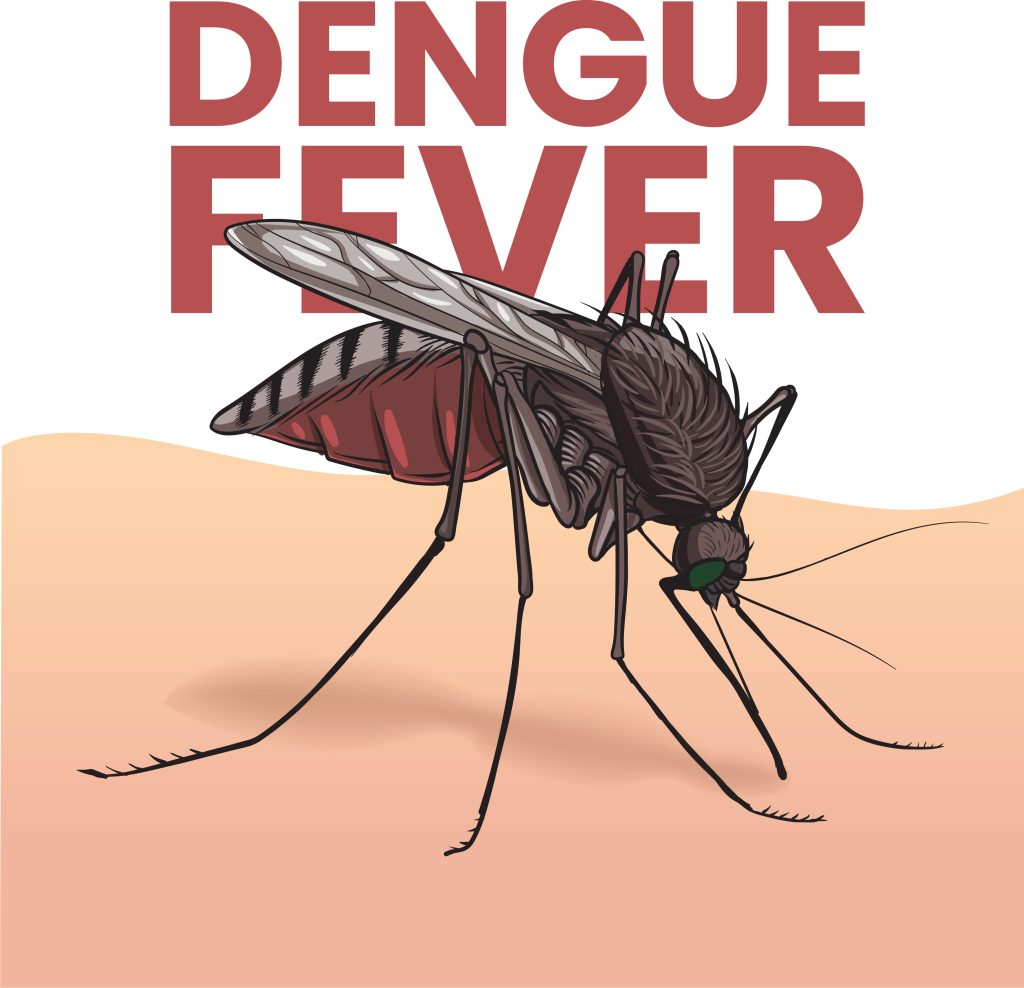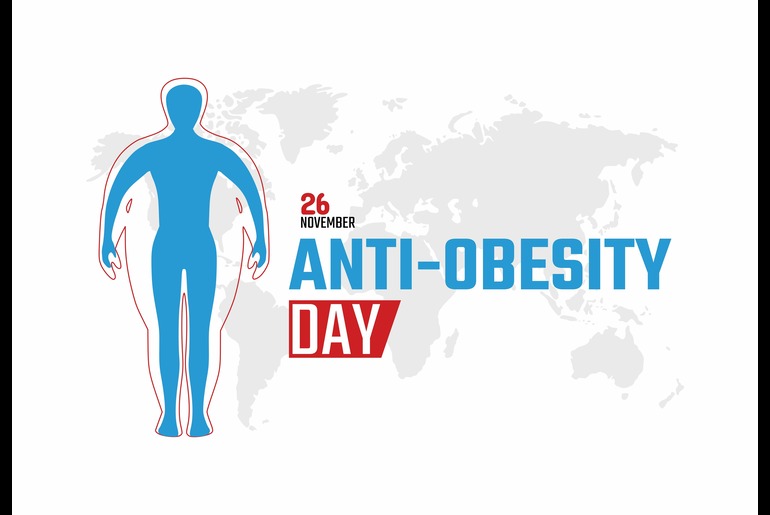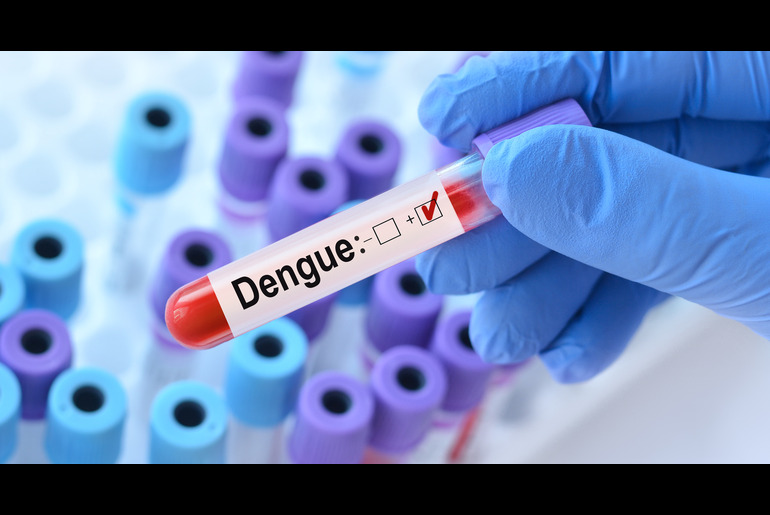Have you ever wondered why dengue becomes a major concern every monsoon season? The rains bring with them a heightened risk of mosquito-borne diseases, especially dengue. While many of us are familiar with the term dengue fever, fewer people know about its more severe counterpart, Dengue Hemorrhagic Fever (DHF). With this article, we aim to provide a clear distinction between these two conditions so that you can better understand the differences.
What is Dengue Fever (DF)?[1]
Dengue Fever (DF) is a viral infection caused by the dengue virus. It is transmitted to humans through the bite of an infected Aedes mosquito. This virus has four distinct serotypes, meaning a person can be infected up to four times. Dengue is known for causing flu-like symptoms and can affect people of all ages.
Causes and Transmission of Dengue Fever[1]
Dengue fever is primarily spread through the bites of female Aedes mosquitoes, specifically Aedes aegypti and Aedes albopictus. These mosquitoes get infected when they bite a person already infected with the dengue virus. Once infected, the mosquito becomes a carrier and has the ability transmit the virus to other humans through subsequent bites.
Prevention of Dengue Fever[1]
Preventing dengue fever involves several strategies aimed at controlling mosquito populations and reducing exposure to mosquito bites:
- Mosquito Control: Eliminate stagnant water sources where mosquitoes breed, such as flower pots, buckets, and discarded tyres.
- Use of Repellents: Apply mosquito repellents on exposed skin and clothing to deter mosquito bites.
- Wearing Protective Clothing: Wear long-sleeved shirts, long pants, socks, and shoes to minimize skin exposure.
- Using Mosquito Nets: Sleep under mosquito nets, especially in areas where dengue is common.
What is Dengue Hemorrhagic Fever (DHF)?[2]
Dengue Hemorrhagic Fever (DHF) is a severe form of dengue fever that can be life-threatening. It is characterised by bleeding, blood plasma leakage, and low platelet count, leading to dengue shock syndrome (DSS) if not promptly treated. DHF typically occurs after a person has been infected with the dengue virus more than once, although it can also occur during the first infection.
Causes and Transmission of Dengue Hemorrhagic Fever[2]
Like dengue fever, DHF is transmitted through the bites of infected Aedes mosquitoes. The progression from dengue fever to DHF can occur when the immune system’s response to a second dengue infection exacerbates the severity of the disease.
Prevention of Dengue Hemorrhagic Fever[2]
Preventing DHF involves similar strategies as those for dengue fever, with an added emphasis on early detection and treatment:
- Mosquito Control: Continue efforts to eliminate mosquito breeding sites.
- Early Detection and Treatment: Seek medical attention promptly if dengue fever is suspected to monitor and manage symptoms effectively.
Key Differences Between Dengue Fever (DF) and Dengue Hemorrhagic Fever (DHF)[2]
Incubation Periods and Onset of Symptoms
- Dengue Fever (DF): The incubation period ranges from 4 to 10 days after being bitten by an infected mosquito. Symptoms typically start with a sudden high fever.
- Dengue Hemorrhagic Fever (DHF): Symptoms of DHF usually appear after the initial dengue fever infection has subsided. The progression to DHF can occur within a few days of the onset of dengue fever symptoms.
Common Symptoms Shared by Both DF and DHF[2]
- High fever
- Severe headache
- Pain behind the eyes
- Joint and muscle pain
- Nausea and vomiting
- Skin rash
Unique Symptoms Specific to Dengue Fever:[2]
- Mild bleeding (e.g., nosebleeds, gum bleeding)
- Fatigue
Unique Symptoms Specific to Dengue Hemorrhagic Fever[2]
- Severe bleeding (e.g., gastrointestinal bleeding, bleeding under the skin)
- Blood plasma leakage leading to shock
- Low platelet count
Severity and Potential for Complications[2]
- Dengue Fever (DF): Generally self-limiting with supportive care. Complications are rare but can include dehydration and prolonged fatigue.
- Dengue Hemorrhagic Fever (DHF): Potentially life-threatening without prompt medical intervention. Complications include severe bleeding, organ damage, and shock.
Common Diagnostic Tests for Both DF and DHF[3]
- Blood tests to detect the presence of the dengue virus or antibodies.
- Complete blood count (CBC) to monitor platelet levels and hematocrit.
Specific Tests Used for Dengue Fever:[4]
- NS1 antigen test (early detection)
- IgM and IgG antibody tests
Specific Tests Used for Dengue Hemorrhagic Fever:[3]
- Hematocrit test to detect blood plasma leakage
- Coagulation profile to assess bleeding risk
Treatment Approaches and Medical Interventions for DF and DHF[5]
- Dengue Fever (DF): Treatment is supportive, focusing on managing symptoms such as fever and pain. Adequate hydration is essential.
- Dengue Hemorrhagic Fever (DHF): Requires hospitalisation for intensive care. Treatment includes intravenous fluids, blood transfusions, and close monitoring of vital signs.
Conclusion
Understanding the differences between Dengue Fever (DF) and Dengue Hemorrhagic Fever (DHF) is crucial to reduce the risk of dengue and its more severe forms. Stay informed, stay protected, and let’s work together to combat dengue in our communities.
Reference Links:
[1] https://www.mayoclinic.org/diseases-conditions/dengue-fever/symptoms-causes/syc-20353078
[2] https://www.mayoclinic.org/diseases-conditions/dengue-fever/symptoms-causes/syc-20353078#:~:text=This%20is%20called%20severe%20dengue,organ%20failure%20and%20even%20death.
[3] https://emedicine.medscape.com/article/215840-workup?form=fpf
[4] https://www.cdc.gov/dengue/hcp/diagnosis-testing/index.html#:~:text=A%20serum%20sample%20is%20preferred,not%20require%20further%20confirmatory%20testing.
[5] https://www.mayoclinic.org/diseases-conditions/dengue-fever/diagnosis-treatment/drc-20353084





